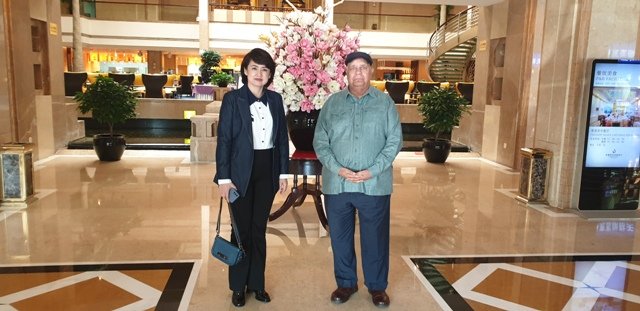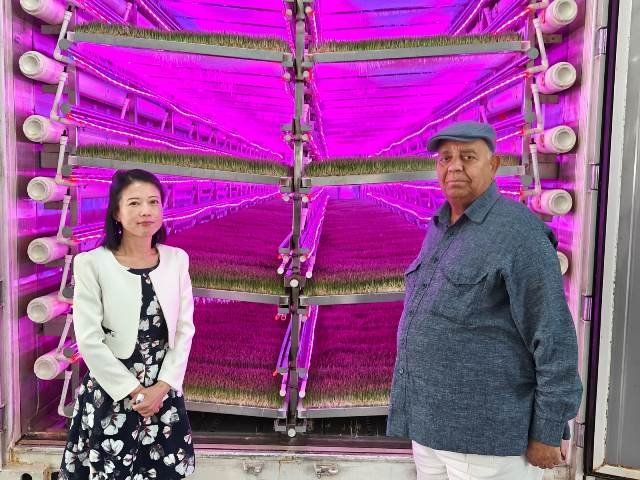Doha, 30 Oct. 2023 (QT)
By Ashraf Siddiqui
China's per capita income in 1980 stood at $690. By 2022, it had skyrocketed to around $12,670 accompanied by a staggering Gross Domestic Product (GDP) of $17.9 trillion, securing China’s position as the second largest economy in the world, trailing only the USA.
China has evolved from a low-income country to an upper-middle income country and, as per a World Bank report, the country is on track to reach high income status within the next five years. One of the most astonishing achievements is the fact that around 800 million Chinese citi�zens have transcended poverty, a figure nearly double the entire population of the European Union and two and a half times the population of the United States. This remarkable accomplishment accounts for 75 percent of the global effort to eradicate poverty.
What’s even more astounding is that China has achieved this feat despite its vast geographical expanse, spanning over 9.6 million square kilometres, with a population that has burgeoned from 980million to 1.4 billion, and encompassing 46 distinct ethnicities with diverse cultures.
Central to this transformative journey is the pivotal role played by the Chinese government. The government has spent over $700bn from 1980-2022 to support impoverished households and small and medium sized businesses in elevating their incomes.
Furthermore, China has solidified its position as a global leader in scientific and technological advancements, particularly in fields such as robotics, artificial intelligence, quantum technology, and financial technology. The country has also made significant strides in crucial areas like health care, education, and digital infrastructure, with more than 98 percent of impoverished villages having access to optical fiber and 4G connectivity.
The remarkable facet of China’s development is its ability to create opportunities for its people to enhance their livelihoods. This is evident from a country with no billionaire four decades before, now being home to 1,056 billionaires, highest globally, surpassing the USA.
My recent visits to various parts of China gave an opportunity to witness firsthand positive changes and innovations taking place. Meetings with government authorities, factory managers, farmers, traders, and visits to international sea and land ports have all underscored the multifaceted progress which has taken
root.
During visit to Urumqi and Kashgar in Xinjiang, an autonomous province in the northwest, most modern and highly developed infrastructure revealed the deep commitment and financial support from the central government in uplifting the lives of the impoverished and bolstering the local economy.
Xinjiang, a pivotal player in trade for centuries famed for silk road playing an important role in the Belt and Road initiative (BRI), is keen on attracting investors and businesses from countries like Qatar. The region offers numerous opportunities spanning various sectors, with a particular emphasis on agriculture meeting food security challenges of Qatar.
I met individuals like Abdul Rahman, an elderly farmer in a village near Kashgar. He expressed his gratitude to the government for its support which enabled him to build his house and sustain his land for cultivation. Such support has been extended to hundreds of other farmers in the area, exemplifying the central government’s commitment to improving living standards.
Visits to factories like Xinjiang Zijing Chuansuo High-tech Agriculture Co. Ltd; Camel Hump Fine Hair Co. and Shufu County Jiang Guo Guo vividly illustrated the impact of government assistance in bolstering agro, traditional industries and promoting innovation. These companies showcased sustainable practices and technology driven solutions.
Mubarak Mugat, Deputy Director General, at Ministry of Foreign Affairs, Xinjiang Province, praised Chinese Central government’s concern and financial support to the province for eradicating poverty and reducing the gap in income.
She invited investors and the business community from Qatar to look into the possibilities of building business relations and take advantage of the rich resources of Xinjiang for the benefit of people of both the countries.
China’s success in raising the living standards of its diverse population hinges on broad-based economic transformation in conjunction with targeted poverty reduction policies, reducing inequality in less developed regions like Xinjiang, healthcare, education and strengthening key institutions engaged in economic and social development.
China pivots resources from the public sector to private sector, and embraces innovation, technological progress, and foreign investment. It continues to get support from international financial houses like of World Bank (WB) and International Finance Corporation (IFC). WB has invested over $66.77bn since 1980, in 441 development projects, while IFC has contributed $17.6bn to more than 400 projects during same period. However, the relation between China and international financial institutions has evolved, reduced lending, and limited to selective approach, in accordance with agreements signed in 2018.
Moreover, China’s unique initiative and sharing of its wealth for the economic development of regional countries and prosperity of the people within country and the rest of the world through projects like BRICS, reinforces the belief that with sustained commitment and determination, China is on its way to achieving
its ambitious goals of constructing a great, modern, socialist country, attaining nationwide common prosperity, establishing a moderately prosperous society, and eliminating absolute poverty.
To mitigate income inequality, China aims to increase per capita income to yuan 75,000 by 2025. This enduring commitment to development serves as an inspiring example for the world to follow.













This is really a deep economic knowledge that I have gained about China, there is no doubt that this exemplary country has become a model for other countries on how to promote their economic development, excellent review
Excellent generalist Mr ashaf sadel